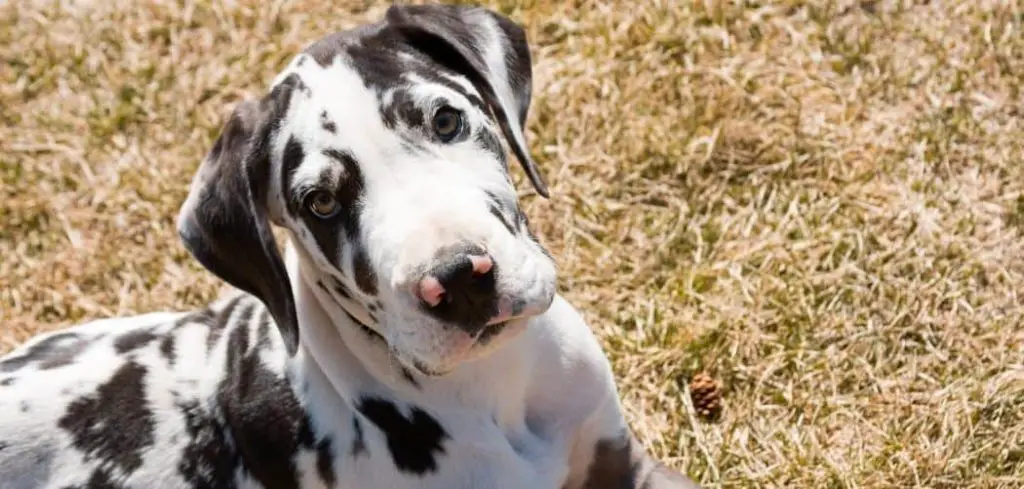It can be alarming when your dog suddenly begins drinking a lot more water than usual.
Excessive thirst, also known as polydipsia, may seem harmless at first, but it could point to underlying health concerns that shouldn’t be ignored.
We outline the common causes of excessive thirst in dogs, what you can do at home, and when to seek veterinary help.
Dog Excessively Thirsty — Why It Happens
A dog that’s drinking large amounts of water may be experiencing anything from mild dehydration to a serious internal condition. Common reasons include hot weather, increased physical activity, or switching to dry kibble.
But excessive thirst can also signal more serious issues like diabetes, kidney disease, or a hormonal disorder such as Cushing’s disease.
In some cases, even certain medications or infections can drive your dog to drink more than usual.

Dog Excessively Thirsty: Common Causes
Dehydration
Dehydration is one of the most common and benign reasons dogs become excessively thirsty.
It often occurs after vigorous exercise, vomiting, diarrhea, or spending time in hot or dry environments.
Your dog may drink repeatedly in an attempt to replace lost fluids.
Look for other signs like sunken eyes, sticky gums, and lethargy.
While mild dehydration can usually be corrected at home, prolonged or severe dehydration needs prompt veterinary attention.
Diabetes Mellitus
Diabetes is a major cause of increased thirst and urination in dogs.
The condition occurs when the body cannot produce or effectively use insulin, leading to elevated blood sugar levels.
As the kidneys work overtime to filter out the excess sugar, more water is lost in the urine—prompting your dog to drink more.
Alongside excessive thirst, signs may include weight loss, increased appetite, lethargy, and cloudy eyes.
Diabetes requires lifelong management and is not something that can be treated at home.
Kidney Disease
Chronic kidney disease impairs your dog’s ability to filter and retain water properly.
As the kidneys lose function, more fluid is excreted in the urine, causing your dog to compensate by drinking more water.
You may also notice increased urination, foul breath, weight loss, vomiting, and poor coat condition.
Kidney issues are more common in older dogs but can occur at any age due to toxins, infections, or congenital problems.
Early diagnosis and treatment can slow the disease’s progression.
Read more: Dog Excessively salivating (What’s really going on?)
Cushing’s Disease
Also known as hyperadrenocorticism, Cushing’s disease is a hormonal disorder often marked by excessive thirst.
It occurs when the body produces too much cortisol, a stress hormone. Dogs with Cushing’s typically drink and urinate more, develop a pot-bellied appearance, lose hair, and may become lethargic.
This condition is common in middle-aged and older dogs and is diagnosed through blood tests and imaging. It usually requires medication or, in some cases, surgery.
Urinary Tract Infection (UTI)
A urinary tract infection can lead to an increased urge to urinate, which in turn makes your dog drink more to stay hydrated.
Other signs of a UTI include straining to urinate, urinating in the house, bloody or cloudy urine, and discomfort while peeing. Some dogs with UTIs may also run a fever or become lethargic.
UTIs require antibiotics and sometimes additional diagnostic testing to rule out stones or other underlying issues.
Medication Side Effects
Certain medications can increase thirst as a side effect.
Common culprits include corticosteroids like prednisone, diuretics, anti-seizure medications, and drugs for heart disease. If your dog has recently started a new medication and seems excessively thirsty, contact your vet to see if the dosage needs adjusting or if an alternative treatment is needed.
Always monitor your dog’s water intake when starting new medications and report any drastic changes to your vet.
What to Do If Your Dog Is Excessively Thirsty
Start by monitoring how much water your dog is actually drinking. A sudden jump in intake—especially if it’s more than 100 ml/kg/day—may indicate a medical issue.
Keep your dog cool and comfortable, especially during hot weather or after exercise. Ensure clean, fresh water is always available, but avoid limiting access unless advised by your vet.
Check for other symptoms that might help pinpoint the cause, such as changes in appetite, weight, urination, or behavior. Note anything unusual so you can report it to your vet.
If your dog has recently started new food or medication, consider whether that might be contributing. Some dry foods and drugs naturally increase thirst.
You can try feeding wet food to supplement hydration while reducing the compulsion to drink excessively, but this is only a supportive measure—not a cure.
When to Call or Visit Your Vet
Contact your veterinarian if your dog’s excessive thirst persists for more than a day or two, especially if it’s accompanied by other changes.
Seek immediate help if your dog is drinking heavily and also:
Vomiting or having diarrhea
Urinating excessively or having accidents indoors
Acting lethargic, weak, or disoriented
Losing weight or showing signs of pain
Your vet will likely recommend blood tests, a urinalysis, and possibly imaging to identify the underlying cause. Early intervention improves the chances of effective treatment and long-term management.
Read more: Dog licking lips excessively (Could it be serious?)
Key Takeaway
Excessive thirst in dogs isn’t always a minor issue—especially if it appears suddenly or is paired with other symptoms.
While mild causes like dehydration or hot weather are manageable at home, more serious issues like diabetes or kidney disease require professional care.
The best approach is to stay observant, note any changes, and contact your vet if the increased thirst doesn’t resolve within a short time.
Your attentiveness can make all the difference in keeping your dog healthy and hydrated.
